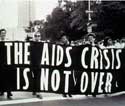November 2010
Free Palm Card Printing
 The holidays are coming! Could you use 100 full-color palm cards? Perhaps an end of year greeting or donation appeal? A little agit-prop or calling card? And don’t travel without your atheism cards!
The holidays are coming! Could you use 100 full-color palm cards? Perhaps an end of year greeting or donation appeal? A little agit-prop or calling card? And don’t travel without your atheism cards!
Next Day Flyers is offering one of my readers free printing of 100 1/6 page flyers (4.125 x 3.375 inches) printed on 14 PT card stock, with full color on the front and black on the back. They will print with next day turnaround and include ground shipping to anywhere in the Continental U.S.
Next Day Flyers is an offset printing company that prints posters, flyers and business cards.
 To enter, just leave a comment on this post before midnight EST Friday, November 26, 2010. You must be 18 or over to enter and must include your email address (though it will not show publicly on the site.) One commenter will be chosen at random to win the free printing.
To enter, just leave a comment on this post before midnight EST Friday, November 26, 2010. You must be 18 or over to enter and must include your email address (though it will not show publicly on the site.) One commenter will be chosen at random to win the free printing.
Update: Comments are now closed. Congratulations Jesse!
Art vs Empire

The Center for the Study of Political Graphics has two new online exhibitions: MasterPeaces, High Art for Higher Purpose and Art Against Empire, Graphic Responses to U.S. Interventions Since World War II. Both are chock full of oppositional graphic goodness (and one of my poster designs, too!)
Sir! No Sir!
 From Peter Linebaugh in CounterPunch:
From Peter Linebaugh in CounterPunch:
“On the 11th hour of the 11th day of the 11th month the Great Powers of the World signed the armistice laying down arms after four years of the bloodiest war in history. That was 1918.
Now, we call it Veteran’s Day.
What caused the armistice was the refusal of soldiers to fight. They refused ‘to go over the top’ anymore. In Russia, France, England, Italy they refused to participate in the slaughter which had begun in 1914.
What we learn from Armistice Day is that the soldier is the front line of the peace movement.”
GI refusal also helped end the war in Vietnam, and it’s spreading in Iraq and Afghanistan, too, encouraged by veterans speaking out.
Decision Points
Decisions, decisions. True Crime or Science Fiction & Fantasy? Marketing & Advertising?
Where would you shelve George W. Bush’s memoir?

Do No Harm, Do More Good

The board of the largest professional organization of designers in the US, the AIGA, has quietly amended their Standards of Professional Practice to include these new additions:
“7.2 A professional designer is encouraged to contribute five percent of his or her time to projects in the public good—projects that serve society and improve the human experience.
7.3 A professional designer shall consider environmental, economic, social and cultural implications of his or her work and minimize the adverse impacts.”
While it’s not quite a Hippocratic Oath for designers it’s great to see the AIGA finally institutionalize and push an ongoing commitment to design in the public interest.
 Visual AIDS has posted a small gallery of typographically-driven work from artists with HIV. In context, some of the images are quite devastating. Here’s the curator’s statement.
Visual AIDS has posted a small gallery of typographically-driven work from artists with HIV. In context, some of the images are quite devastating. Here’s the curator’s statement. Mapping Your Audience, 1
Nancy Duarte’s Slide:ology is one of my favorite design books. And this bit is particularly great: seven questions to help understand your target audience. Though intended as a guide for your design process, I think this touches something very human and applies not just to information architecture and design, but to political advocacy as well.
I’ve shamelessly adapted a version of this for a talk on design and advocacy, but here’s the raw source:
Seven Questions to Knowing Your Audience
“The audience didn’t come to see you, they came to see what you can do for them. If you fill out this audience persona slide, it will give you insights into how to present in a way that will resonate with your audience.
- What are they like?
Demographics and psychographics are a great start, but connecting with your audience means understanding them on a personal level. Take a walk in their shoes and describe what their life looks like each day.
- Why are they here?
What do they think they’re going to get out of this presentation? Why did they come to hear you? Are they willing participants or mandatory attendees? This is also a bit of a situation analysis.
- What keeps them up at night?
Everyone has a fear, a pain point, a thorn in the side. Let your audience know you empathize—and offer a solution.
- How can you solve their problem?
What’s in it for the audience? How are you going to make their lives better?
- What do you want them to do?
Answer the question “so what?” Make sure there’s clear action for your audience to take.
- How might they resist?
People vary in how they receive information. This can include the set up of the room to the availability of materials after the presentation. Give the audience what they want, how they want it.
- How can you best reach them?
What will keep them from adopting your message and carrying out your call to action?
You can also download it from Duarte Design as a PowerPoint slide.

